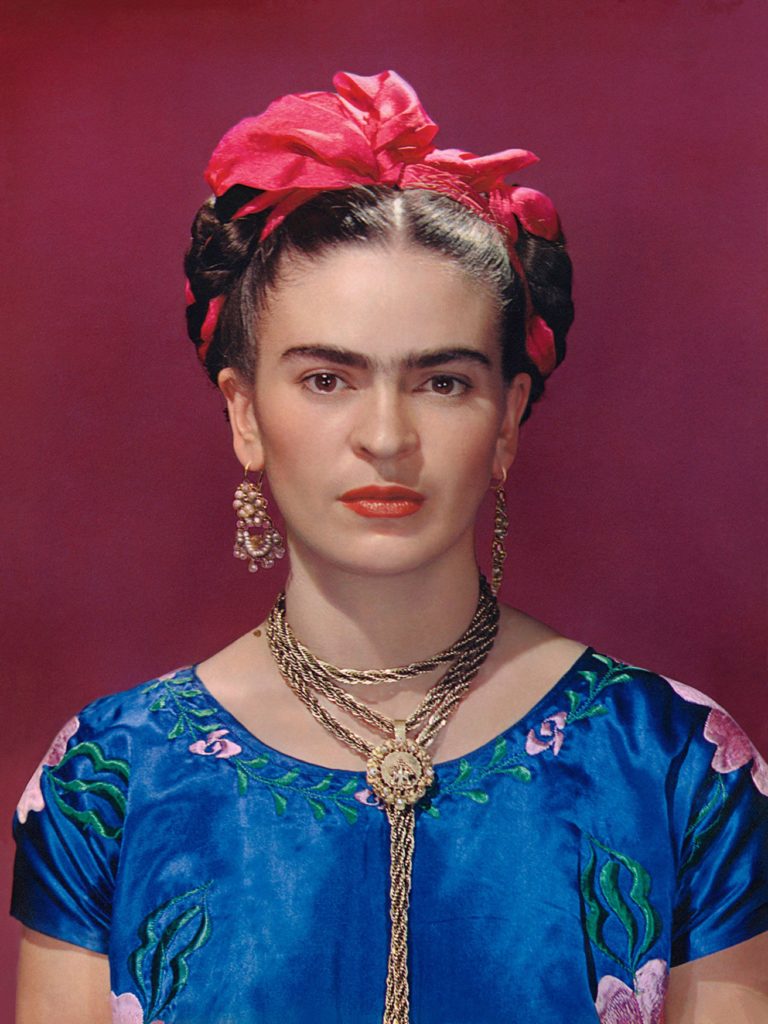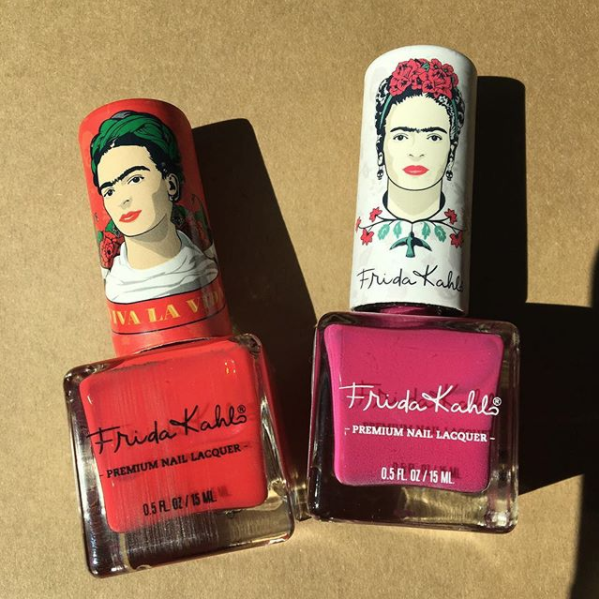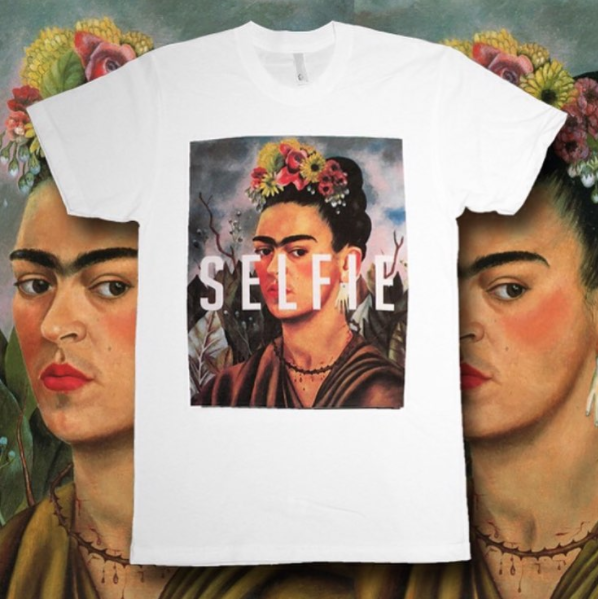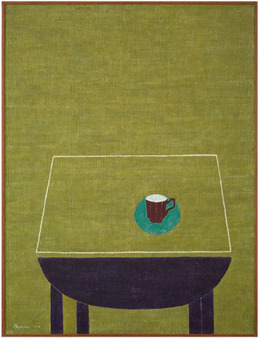
04 May TIO NYC: Frida & Frieze
“Frida Kahlo:Appearances Can Be Deceiving” at the Brooklyn Museum runs through May 12. Advance tickets are now sold out through the close of the exhibition. Same-day, on-site tickets are timed, offered on a first-come, first-serve basis, and sell out quickly each day. However, you get in for free if you purchase a membership in the Museum.
Frieze closes May 5.

Frida in blue blouse by photographer Muray. He was also one of her loverrs and wanted her to leave Diego for him.
“Frida Kahlo, Appearances Can Be Deceiving”:
We came.
We saw.
That she conquered.
There is a Barbie Doll in her image.
Vials of nail polish, lip glosses and bars of soap created in her honor. (Revlon is one of the sponsors of the exhibit.)


Also themed cafés, restaurants, and street murals.
Beyonce once dressed as the lady. (And we know the old trope about flattery and praise.)
And during one catastrophic party speech, British prime minister Theresa May wore a bracelet decorated with her visage. To prove she, a conservative, was a woman of the people?
Hayden Herrera’s wildly successful 1983 biography of Kahlo led to a 2002 Hollywood movie starring Salma Hayek, with Madonna reportedly vying for the title role too.
With a Snapchat filter, about 800,000 Instagram followers, web portals in countries as far away as South Africa and Brazil, even emojis in her image, Frida Khalo is both one of the most famous artists in the world and a major pop culture icon.

And that is no accident.
Frida Kahlo of the famous unibrow, whisper of a ‘stache above rouged lips, defiant gaze, cultivated and controlled her image so meticulously she remains a case study for celebrity wannabes in branding. One critic said that in her mania, she rivaled Cleopatra.
Fridamania was doing the full peacock at the Brooklyn Museum, tribute: “Frida Kahlo: Appearances Can Be Deceiving.” The show tells the story of the lady’s life through art work; photography; clothing; jewelry; objects from her home (with Diego Rivera) Casa Azul, including per-Columbia antiquities; and film.
We think it is well worth the trip to the borough, especially if you are into the politics of celebrity. Kahlo’s art – and there are only about 11 paintings – will also charm especially if you favor a Rousseau-esque magic realism largely derived from the artist’s Catholic background, with Eastern spiritual overlays.

It was a long, hard road from lame – Kahlo had polio as a girl and was in a life-threatening traffic accident as a teen – to fame, a journey that involved transforming herself into a work of art.
Kahlo clearly wanted to be seen.
She painted herself and her pain obsessively, sometimes in the guise of a saint or martyr, as in “The Broken Column” (1944), which shows her suspended over an open landscape, her body fractured down the middle and peppered with nails, an allusion to the many surgeries she would undergo following those physical assaults in her youth.

Appearances Can Be Deceiving.
She also painted her husband, artist and serial philanderer Diego Rivera.
Kahlo collected wardrobe from various indigenous peoples, including the Tehuantepec in Southern Mexico, her mother’s home and not coincidently a matriarchy. Her costumes for the stage of life were certainly not only conventional garb for someone of her privileged upbringing. They were was designed to make a political statement.
Kahlo never appeared before her husband, her friends, her lovers, certainly the public, but even her easel without being dressed – to cover her infirmities, she wrapped herself top to bottom like a Christo – coiffed and made-up to the nines.
But none of her efforts were in vain.
Since her death in the 1954, Frida Kahlo has become a global symbol of resilience in the face of adversity and male oppression, a feminist icon and, thanks to her bisexuality and multiple, equal opportunity affairs, a cult figure in the LGBTQ community. Her rise to prominence in pop culture, particularly since the 1980’s, coincides with the ascendance of image politics.

Frida, courtesy of The New York Times.

That said, what else comes through at the Brooklyn Museum show is beside Kahlo’s beauty, strength and determination is her alegria or her innate love of life in the face of pain and suffering, underlined by one of her many famous quotes:
“I am not sick. I am broken. But I am happy to be alive as long as I can paint.”
Kahlo’s story of working out personal devils through mark-making resonates not just because her life and work was so colorful, but also because hers is part of a larger history of challenged artists and their work.
Frieze:
Frieze is one of a number of art fairs happening in New York right now. And well worth the schlepp to Randall’s Island.
On display is mind-boggling, eye-popping cross-section of work ranging from emerging artists to icons of the 20th century, among them, Motherwell, Jim Dine, Rauschenberg, Red Grooms and Alex Katz. (Don’t miss Katz’s “Red Dancer,” a diptych.)

Alex Katz, slice of the diptych, “The Red Dancer,”
In all, the tent features about 1,000 leading artists.
Among our favorite stops: the life-size sculpture, aptly titled The Bus (1995), the work of Red Grooms presented by London’s Marlborough Gallery in the fair’s Spotlight section.

Jenny Holzer’s new work. The focal point is her four-sided LED sculpture ‘MOVE,’ 2015. Other highlights include a selection of stone benches and a group of new Redaction Paintings with highly political, anti You Know Who messages.

Brian Bress’s smart, funny hi-def videos at Josh Lilly.
The paintings of German-born Brazilian artist Eleonore Koch. Her whisper-quiet dreamscapes.

Scott Lyall‘s minimalist digital prints which tag color field painting but are also soulscapes reminiscent of Rothko. His work, on display in the Miguel Abbreu space, amounts to a discussion of the relationship between artist and viewer, his reflective surfaces making clear that we spectators are both outside and inside the work. We complete it.

Scott Lyall ,courtesy Liz-Deschenes.


Sorry, the comment form is closed at this time.